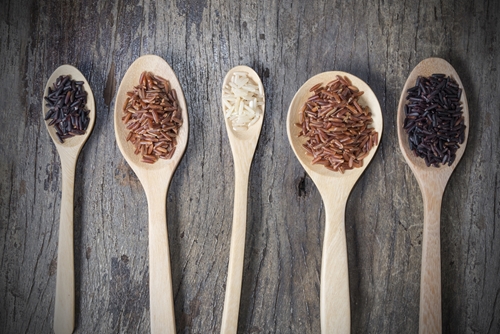Laminitis, insulin resistance, reproductive issues and lipomas – these aliments are all associated with equine obesity. Yet despite the dangers, the number of overweight horses is steadily increasing. According to research cited by TheHorse.com, the National Animal Health Monitoring System estimated 5 percent of American horses were obese in the late 1990s. Yet more recent studies show horse populations in a variety of locations, including Scotland and North Carolina, are anywhere from 40 to 50 percent obese. If you’ve noticed your horse’s weight creeping up, you may need to consult with your veterinarian about changing its diet.
Signs of obesity in horses
The University of Minnesota provided three helpful ways to determine if your horse is an unhealthy weight:
1. Body condition
The first, and arguably most well known, is to check it’s body condition score. This system was designed by Don Henneke during his time as a graduate student at Texas A&M University and has since become the standard for judging obesity and malnourishment in horses. The Henneke system rates the following main areas on a scale of 1 to 9:
- Neck.
- Shoulder.
- Withers.
- Ribs
- Loins.
- Tailhead.
“Horses are healthy if they fall between a 4 and 6 on the Henneke scale.”
A score of 5 is ideal, but most horses are considered healthy if they fall between a 4 and 6. A score of 7 or above is overweight.
2. Cresty neck score
Horses with excess fat around their necks may be overweight and suffer from additional metabolic issues. The cresty neck scale runs from 0 to 5, with a higher number signifying more fat. Horses with a score of 3 or higher are likely overweight.
3. Girth-to-height ratio
Similar to the body mass index, this ratio calculates the relationship between a horse’s width and its total height. A ratio greater than or equal to 1.26 means your horse is obese.
You can also strictly look at your horse’s weight, but this is a more ambiguous way of determining its health, especially for well-trained animals. Muscle weighs far more than fat and, according to a separate article on TheHorse.com, accounts for at least 50 percent of an athletic equine’s total body weight.
What to do if your horse is overweight
Approach an overweight horse the same way you would try to lose weight yourself: by altering its diet and physical activity so it’s working at a caloric deficit. Your horse, just like any animal, loses weight when it uses more energy than it takes in.
“Schedule regular turnout time in an area free of edible forage.”
When changing your horse’s exercise routine, focus on frequency rather than duration. According to Horse Channel, five short exercise sessions during the week are more beneficial than a single long session on the weekend. Also, be sure to schedule regular turnout time so your horse is free to move about, and make sure the pasture is free of edible plants that pack on calories.
Altering the diet is a little more complicated. Horses need a wide, complex variety of nutrients, and cutting back on calorie-rich feed deprives them of essential vitamins and minerals. However, the most common advice is to reduce the amount of grain your animal consumes. Grain is full of fats and carbohydrates, making it a prime target of any weight-loss program. Consult with your veterinarian on how much grain to eliminate based on your horse’s size and activity levels. In addition, consider adding equine supplements to its diet to make up for the missing nutrients. One option is Finish Line’s Ultra Fire, a multivitamin that contains a total of 23 nutrients. Meanwhile, Total Control PLUS combines six best-selling products to support your horse’s overall health.








